This post was written by Kathrin Kaiser ’18
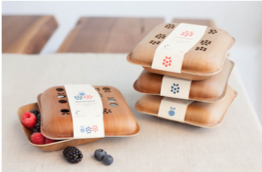 Sixty-three pounds of plastic, per person, ends up in landfills in the United States. An increased consumer demand for sustainability and the amount of waste coming from disposing packaging makes companies re-think their packaging. They start to incorporate new, sustainable materials and construction methods into their packaging to reduce their impact on the planet. Here’s four clever ideas for companies to reduce their carbon footprint by changing their packaging:
Sixty-three pounds of plastic, per person, ends up in landfills in the United States. An increased consumer demand for sustainability and the amount of waste coming from disposing packaging makes companies re-think their packaging. They start to incorporate new, sustainable materials and construction methods into their packaging to reduce their impact on the planet. Here’s four clever ideas for companies to reduce their carbon footprint by changing their packaging:
- Reducing the ink in company logos
Big brands like McDonald’s or Starbucks might be able to save millions of dollars every year and help preserve the planet just by slightly changing their logos. “Ecobranding” is a project by Sylvain Boyer, a French graphic designer, where he demonstrates the impact of this slight change. A simplified version of the logos could save companies 10-39% in ink and result in additional secondary benefits, such as reduced printing costs and a cut in energy consumption.
- Arekapak
That certain uses of plastic are “evil” is no longer news, not only to environmentalists but also to large corporations. But just banning plastic bags at the register might not be good enough – vegetables and fruits are often shrink-wrapped in plastic, causing tons of landfill. Especially the food industry could benefit from the idea of two female innovators: Arekapak. It is a food packaging alternative, made out of palm leafs and produced with very few water and completely without chemicals. The product is also compostable, heat- and cold-resistant and has a water-resistant surface. And like that wasn’t enough good news, Arekapak packaging serves as a dinner plate, too.
- Edible Packaging
What if you could eat the packaging off your food instead of sending it to a thousand years of landfill doom? An Indonesia-based start-up called Evoware has developed just that. Evoware is a biodegradable, dissolvable, edible packaging wrap made out of seaweed (which is also packed with vitamins!). The company plans to create several variations of the product for instant coffee, sugar and seasonings – the packaging can then just be dumped into the hot water and dissolves. Another upside is that this product could help seaweed farmers raising their revenue and do something good for the environment: seaweed absorbs a great deal of the carbon dioxide in the sea!
- Just eliminate packaging completely
“Original Unverpackt” (“original unpacked”) is a Berlin-based supermarket that works without food packaging. Customers just bring their own containers and have those weighed – they only take what they need and the weight of the containers is being subtracted at the register. The entrepreneurial founder- duo wants to reply to the rising demand for more sustainable products and services and alternatives to the “lavish” handling of resources. Similar concepts exist in Austin, Texas (In.Gredients) and London (Unpackaged). Furthermore, Original Unverpackt hopes to make organic food more affordable for people with lower incomes because of the removal of packaging.

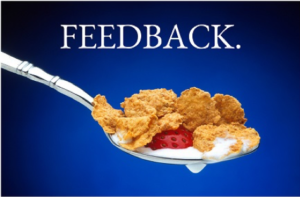 Feedback is the breakfast of champions. Feedback is a gift. Without feedback, leaders are cut off from the lifeblood of an organization and their ideas and abilities will wither and die. These are the words of
Feedback is the breakfast of champions. Feedback is a gift. Without feedback, leaders are cut off from the lifeblood of an organization and their ideas and abilities will wither and die. These are the words of  The opportunity that comes with a one-year program is that there is going to be more information coming at you then you can take in.
The opportunity that comes with a one-year program is that there is going to be more information coming at you then you can take in. 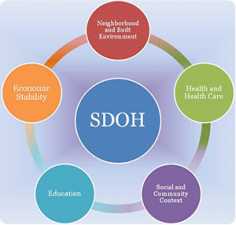 The
The  I chose to attend The Sustainable Innovation MBA program because I wanted to gain the skills necessary to have a productive role in my family’s business. The program drew my attention because of its small size and focus on sustainability and entrepreneurship.
I chose to attend The Sustainable Innovation MBA program because I wanted to gain the skills necessary to have a productive role in my family’s business. The program drew my attention because of its small size and focus on sustainability and entrepreneurship. This
This 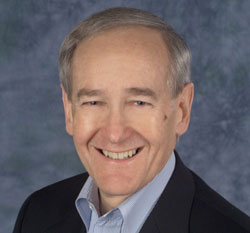 Dennis, affectionately known throughout Rochester, NY as Denny, is the co-founder of Trillium Group Venture Capital and Private Equity and more recently of the Venture Jobs Foundation. Trillium was the first VC firm in Rochester, born after Denny and a Kodak colleague saw an unmet need. Venture Jobs Foundation (VJF) emerged in a similar way after Denny saw that the poorest neighborhoods in Rochester were teeming with the entrepreneurial spirit to revitalize the community but they lacked capital. VJF is an impact investing organization with the mission of bringing jobs and resources to low income neighborhoods via small business.
Dennis, affectionately known throughout Rochester, NY as Denny, is the co-founder of Trillium Group Venture Capital and Private Equity and more recently of the Venture Jobs Foundation. Trillium was the first VC firm in Rochester, born after Denny and a Kodak colleague saw an unmet need. Venture Jobs Foundation (VJF) emerged in a similar way after Denny saw that the poorest neighborhoods in Rochester were teeming with the entrepreneurial spirit to revitalize the community but they lacked capital. VJF is an impact investing organization with the mission of bringing jobs and resources to low income neighborhoods via small business. Lesser known is the history of that time when, although many moved to Vermont to find and build a different way to live, a number also were inspired to find and build a different way to do business. Some of Vermont’s most iconic brands — like
Lesser known is the history of that time when, although many moved to Vermont to find and build a different way to live, a number also were inspired to find and build a different way to do business. Some of Vermont’s most iconic brands — like 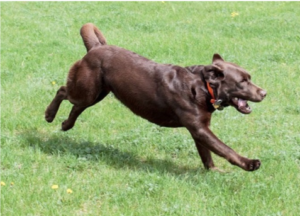 Fortunately for us at The Sustainable Innovation MBA, we don’t have to wait until we get home to experience this joy. Meet Willy Wonka, a 3-year-old chocolate lab who has bounded into Kalkin 110 as our 31st classmate during Professor Erik Monsen’s “Crafting the Entrepreneurial Business Model” class.
Fortunately for us at The Sustainable Innovation MBA, we don’t have to wait until we get home to experience this joy. Meet Willy Wonka, a 3-year-old chocolate lab who has bounded into Kalkin 110 as our 31st classmate during Professor Erik Monsen’s “Crafting the Entrepreneurial Business Model” class.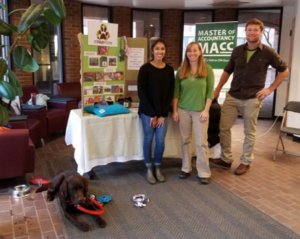 Willy Wonka doesn’t just demonstrate his value around the house. His “dad” is a professor of entrepreneurship, so naturally he has a few different jobs. As a certified therapy dog, Willy Wonka can be seen around campus during exam season providing stress relief to students. When he’s off-campus, you may be able to spot him at your local library, where children read to him. He loves a great story, but it’s hard to know exactly what his favorite genre is. He was even a tester for last year’s cohort’s recycled dog toy company, RePawposed.
Willy Wonka doesn’t just demonstrate his value around the house. His “dad” is a professor of entrepreneurship, so naturally he has a few different jobs. As a certified therapy dog, Willy Wonka can be seen around campus during exam season providing stress relief to students. When he’s off-campus, you may be able to spot him at your local library, where children read to him. He loves a great story, but it’s hard to know exactly what his favorite genre is. He was even a tester for last year’s cohort’s recycled dog toy company, RePawposed. It’s a fantastic opportunity for those seeking to pivot mid-career. Prior to The Sustainable Innovation MBA, I worked in agriculture and non-profits and I had reached a point where opportunities for learning and advancement had flattened out. As a working parent of two young girls, the thought of being in graduate school for years on was overwhelming. The one-year curriculum is perfect for those looking to re-launch their careers quickly.
It’s a fantastic opportunity for those seeking to pivot mid-career. Prior to The Sustainable Innovation MBA, I worked in agriculture and non-profits and I had reached a point where opportunities for learning and advancement had flattened out. As a working parent of two young girls, the thought of being in graduate school for years on was overwhelming. The one-year curriculum is perfect for those looking to re-launch their careers quickly.